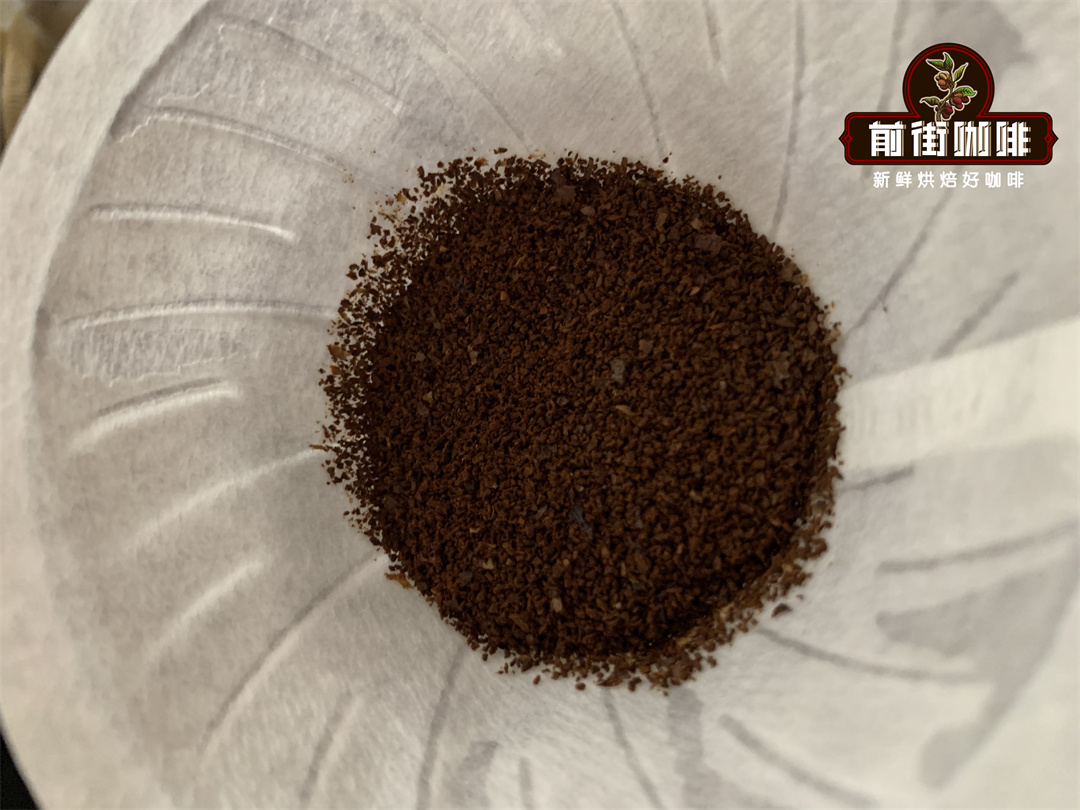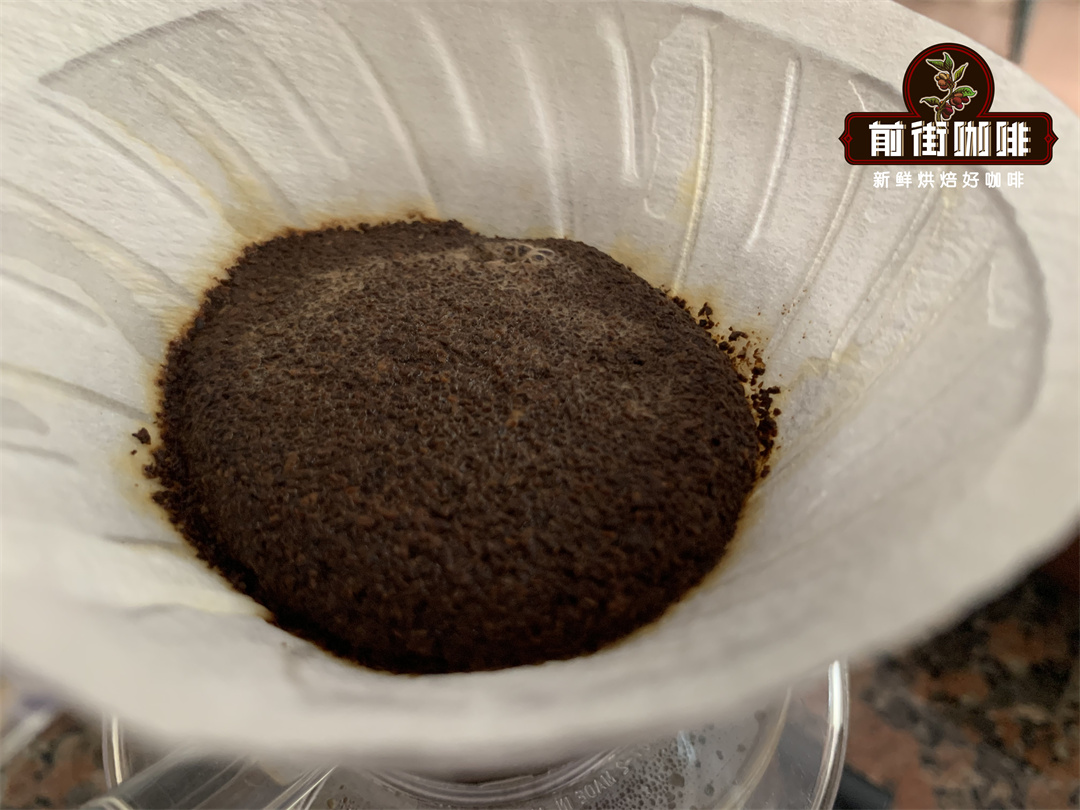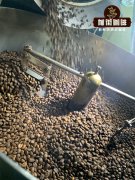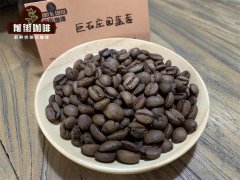What is the difference between steamed coffee and extracted coffee? will the roasting degree of coffee affect the effect of steaming?
Bloom, has the meaning of blooming flowers, and in the professional terminology of coffee, it is familiar with the "steaming"-the so-called steaming, is to brew coffee before, first with a little hot water to soak coffee powder, through the stimulation of hot water, forced out the gas (carbon dioxide) in the coffee powder, to achieve the effect of steaming.
After roasting coffee beans, all will produce fine holes in the surface, a small amount of carbon dioxide release, and the emission rate will vary according to the roasting degree, but relying on fine holes alone will make many carbon dioxide gas can not be fully released, so by steaming coffee powder can fully contact with water, and then complete extraction. During the stewing process, carbon dioxide gas in coffee powder can be completely discharged, and sufficient powder layer gaps can be smoothly created for coffee powder particles discharged with carbon dioxide gas, effectively providing water flow for brewing coffee during water injection.

Steaming and extraction
Steaming is an important process in coffee extraction. If the steaming step is omitted, the brewed hot water will not have enough powder layer gaps to extract coffee, which will not only affect the overall flavor, but also dissolve too many substances and impurities due to the longer drip time, resulting in poor taste buds. So steaming can determine the fate of a good cup of coffee.
Coffee beans are usually ground into powder before brewing coffee, many baristas even strict to immediately brew after grinding, if not brewed in time, the coffee powder will be eliminated for new, from which we know the importance of keeping coffee powder fresh in the air! The principle of nitrogen filling in ear-hanging coffee is to make the substances in the coffee powder not easily oxidized, to maintain the integrity of the coffee substance, and to reproduce the characteristics of the coffee itself.
Coffee stewing varies according to roasting and freshness, depending on the amount of water, temperature, stewing time required, and the final flavor extracted:

Steaming of light and medium roast coffee
The expansion degree is small, because the roasting time is short, the water content is high, the coffee bean density is high, and the carbon dioxide content is relatively small, so when stewing, it can be soaked with twice the amount of water, and the water temperature is controlled to about 90 degrees to improve the taste, aroma concentration, and aroma of the coffee.
Steaming suggestion: 30s~35s
... the steaming-of-deep-roast coffee.
The degree of expansion is large, due to the long baking time, low water content, soft density of coffee beans, and relatively high carbon dioxide content, so it can be soaked with 3 times the amount of water when steaming, and control the water temperature slightly lower than 90 degrees to neutralize the bitter flavor of coffee and make the taste more mellow.
Steaming suggestion: 35s~40s
Steaming before and after bean cultivation
If the roasted coffee beans can be provided with a proper cultivation period, the beans can effectively release gas, and the subsequent grinding and brewing will not be affected by the gas and the acid feeling is too obvious.
If the beans are not ground and brewed in time after cultivation, the coffee beans will be moist and dense due to prolonged exposure to air and absorption of moisture in the air. In order to avoid excessive extraction and excessive bitterness, only about 2 times the amount of water and control the water temperature to about 90 degrees can be used for stewing.
Steaming suggestion: 20s~30s.
Steaming step
1) Before steaming, level the top plane of coffee powder to reduce the uneven condition of coffee powder in filter paper
2) Maintain gentle and smooth brewing force when filling water
3) Adjust the amount of brewing water according to the baking degree and freshness
4) If too much coffee extract drips during steaming, reduce the amount of water immediately, otherwise increase the amount of water
5) Confirm the steaming time, and wait until the coffee powder rises and the surface begins to contract before the steaming ends.
A cup of coffee, in fact, from the stewing step, is enough to affect the taste of the final extract, which is quite the starting point of coffee brewing. In the process of stewing, carbon dioxide will escape when water passes through the coffee powder, causing the coffee powder layer to expand, resulting in the so-called Bloom effect, but in addition to carbon dioxide exhaust, in the brewing process, in fact, more attention is paid to the dissolution of substances, which is quite the concept of Italian coffee extraction pre-soaking. In other words, in addition to chasing the visual enjoyment of coffee brewing expansion, it is also necessary to return to the basic concept of coffee extraction. The concept of extraction will continue to be explained in future introductions.
Important Notice :
前街咖啡 FrontStreet Coffee has moved to new addredd:
FrontStreet Coffee Address: 315,Donghua East Road,GuangZhou
Tel:020 38364473
- Prev

The basics of coffee roasting teach you how to bake coffee according to the color of coffee.
Coffee roasting is looming in the imagination of most coffee lovers for good reason: the roaster is responsible for transforming an ordinary small seed into the complex, diverse and delicious coffee beans we grind, brew and enjoy. Even for very experienced roasters who may have worked in the industry for many years, the transformation of coffee among roasters will always be
- Next

What is the standard of coffee grading in Central and South America? does altitude determine the level of coffee?
It is understood that the more common classification of coffee beans is generally based on the size of coffee beans, according to the size of the sieve, and also according to the defect rate. of course, the difference in this classification also goes deep into every country and region, and they cannot be done step by step. after all, there is a big difference. Most of the Central and South American countries are in Central and South America, and most countries are classified as one.
Related
- What brand of black coffee is the most authentic and delicious? what are the characteristics of the flavor of the authentic Rose Summer Black Coffee?
- Introduction to the principle and characteristics of the correct use of mocha pot A detailed course of mocha pot brewing coffee is described in five steps.
- Which is better, decaf or regular coffee? how is decaf made?
- How much is a bag of four cat coffee?
- How about four Cat Coffee or Nestle Coffee? why is it a cheap scam?
- Which is better, Yunnan four Cats Coffee or Nestle Coffee? How about cat coffee? is it a fake scam? why is it so cheap?
- How about Cat Coffee? what grade is a hoax? which instant coffee tastes better, four Cat Coffee, Nestle Coffee or G7 coffee?
- Process flow chart of coffee making-Starbucks coffee making process what coffee tastes good at Starbucks
- The top ten best coffee beans in the world Rose summer coffee or Tanzanian coffee tastes good
- Yunnan four cat coffee is good to drink?_four cat coffee is a big brand? four cat blue mountain coffee is fake?

